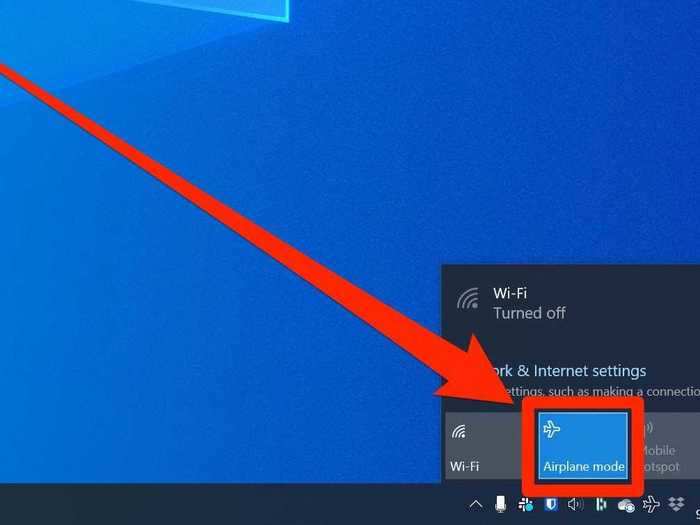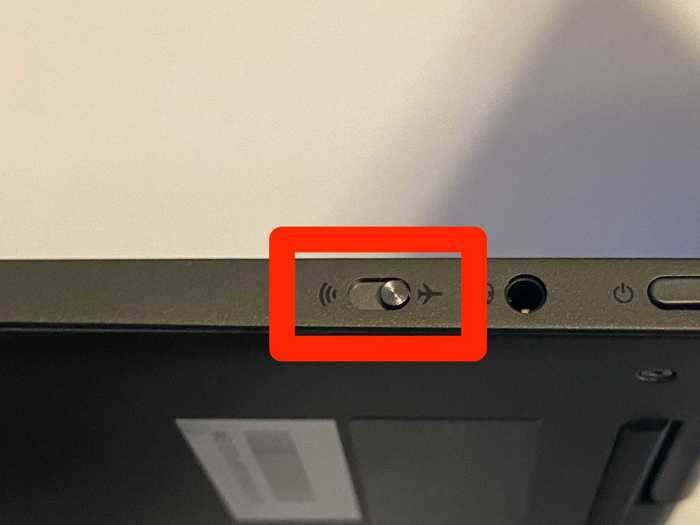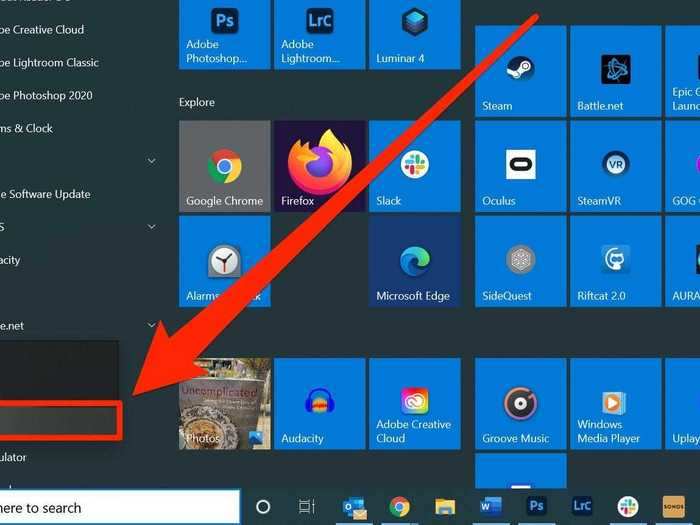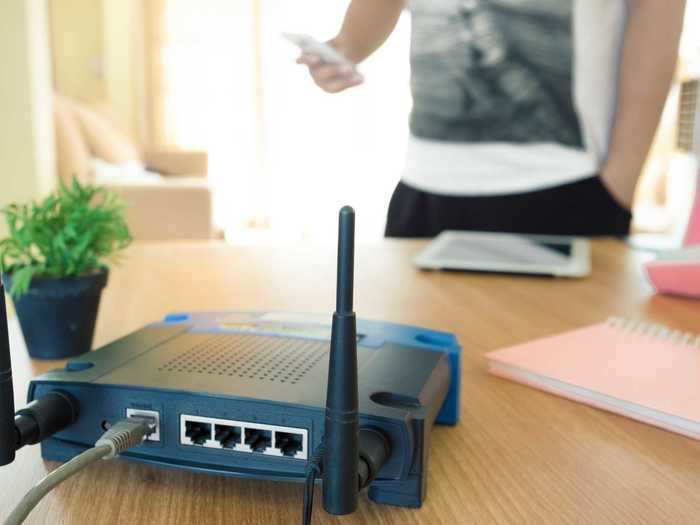Wi-Fi has been such an essential technology for so long that we often take it for granted, like the electricity that powers our computers. But Wi-Fi problems on your PC can bring the entire day to a screeching halt.
Why your PC won't connect to Wi-Fi
Maskot/Getty Images
There are a number of reasons your Windows PC might fail to connect to Wi-Fi. Here are some of the most common issues and how to solve them.
Your PC is in Airplane Mode
Your PC might have been left in Airplane Mode, which keeps it from connecting to Wi-Fi.
Dave Johnson/Business Insider
Make sure that your computer isn't in Airplane Mode, which disables Wi-Fi and other connections.
If you're in Airplane Mode, you'll probably see an airplane-shaped icon in the system tray — click it and then choose Airplane Mode from the pop-up menu to disable it. You can also type "Airplane Mode" in the Start menu search box to check its status.
Your PC's Wi-Fi is switched off
Some computers — especially laptops — have switches that disable Wi-Fi.
Dave Johnson/Business Insider
Your PC might also have a master on/off switch for Wi-Fi, and it's all-too-easy to activate it by accident. Check the sides of your laptop for a slider in the wrong position. It might also be connected to one of the numbered F keys at the top of your keyboard.
You can usually also turn Wi-Fi on and off using a setting in the system tray.
Your Wi-Fi adapter needs to be reset
You can reset your Wi-Fi adapter by restarting your PC.
Dave Johnson/Business Insider
Sometimes mundane technical problems crop up that keep your Wi-Fi from working properly, and the easiest way to fix it is to turn it off and then back on again.
You can "cycle" the Wi-Fi adapter by putting it in Airplane Mode for a few moments — click the Wi-Fi icon in the system tray and click "Airplane Mode." Or just reboot your computer entirely by clicking Start, then "Power," and "Restart."
You're not in range of a Wi-Fi network
There could be an issue with your Wi-Fi router.
Casezy idea/Shutterstock
Don't discount the possibility that the problem isn't with your computer, but with the Wi-Fi network. It's possible the signal is too weak to connect. If you're using a laptop, move around to see if that helps. Wi-Fi can have trouble going through walls, and so any home or office could have dead zones.
First, can other devices (like your phone or tablet) connect to the Wi-Fi network? If not, then the router might be having its own issues.
Reboot it by unplugging it for two minutes, then plug it back in and let it restart. If you have a separate internet router, unplug it too, wait a minute, and plug it back in before restarting the Wi-Fi router.
If you still can't connect, the issue might be with your internet service provider, so contact the ISP to see if there's a service outage.
There's a problem with a network setting
Use a Windows troubleshooter to resolve a Wi-Fi problem.
Dave Johnson/Business Insider
If you think "there's a problem with a network setting" sounds vague, you're right. There are a number of possible issues that rarely affect most Windows users — but when they arise, they're especially hard to troubleshoot. Windows includes its own troubleshooter for just this kind of situation.
Click the Start button and type "troubleshoot." Choose "Troubleshoot settings" from the list of results and then, on the Troubleshoot screen, click "Internet connections." Click "Run the troubleshooter" and follow its directions. The troubleshooter may be able to get your Wi-Fi up and running again.
Your Wi-Fi adapter isn't working
If your Wi-Fi adapter breaks, you won't be able to connect.
Geber86/Getty Images
It's rare, but the Wi-Fi hardware in your PC might have failed. This is generally the last possibility to consider — if you've tried resetting your network connection, rebooted the PC, and determined that other nearby devices can successfully connect, the adapter could be at fault.
Generally, the only recourse is to replace it. There are many inexpensive Wi-Fi adapters that can plug into one of your PC's USB ports.
Related coverage from
Tech Reference:







